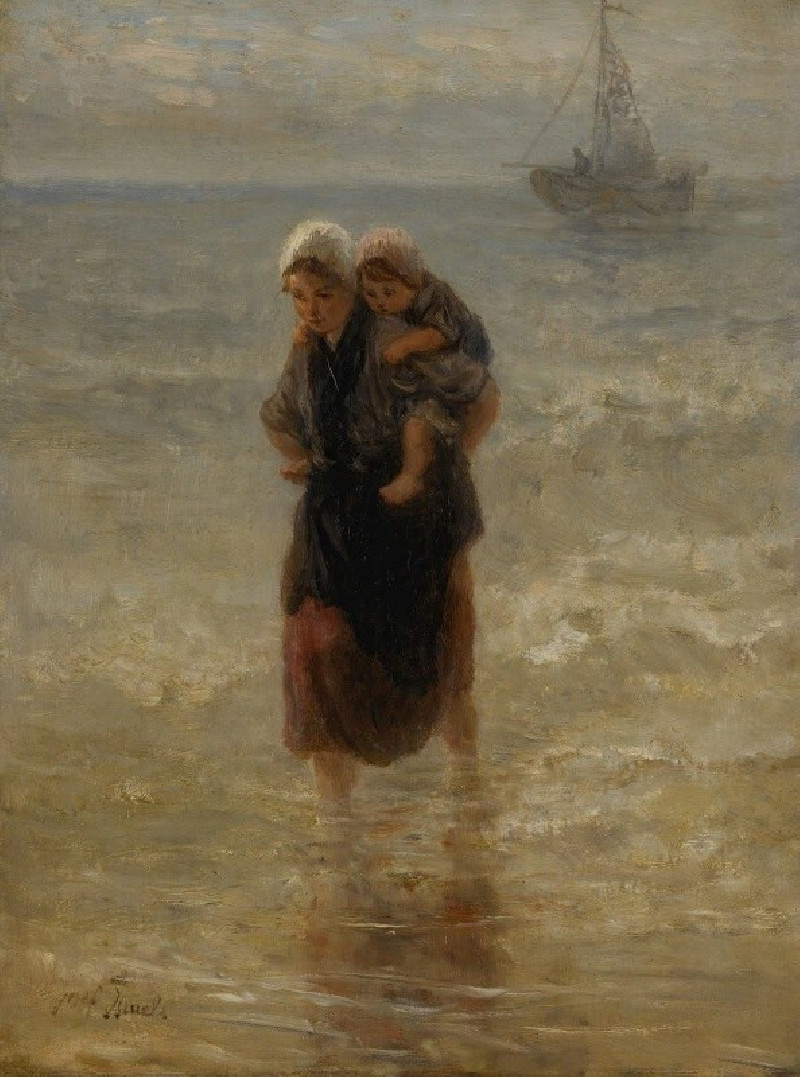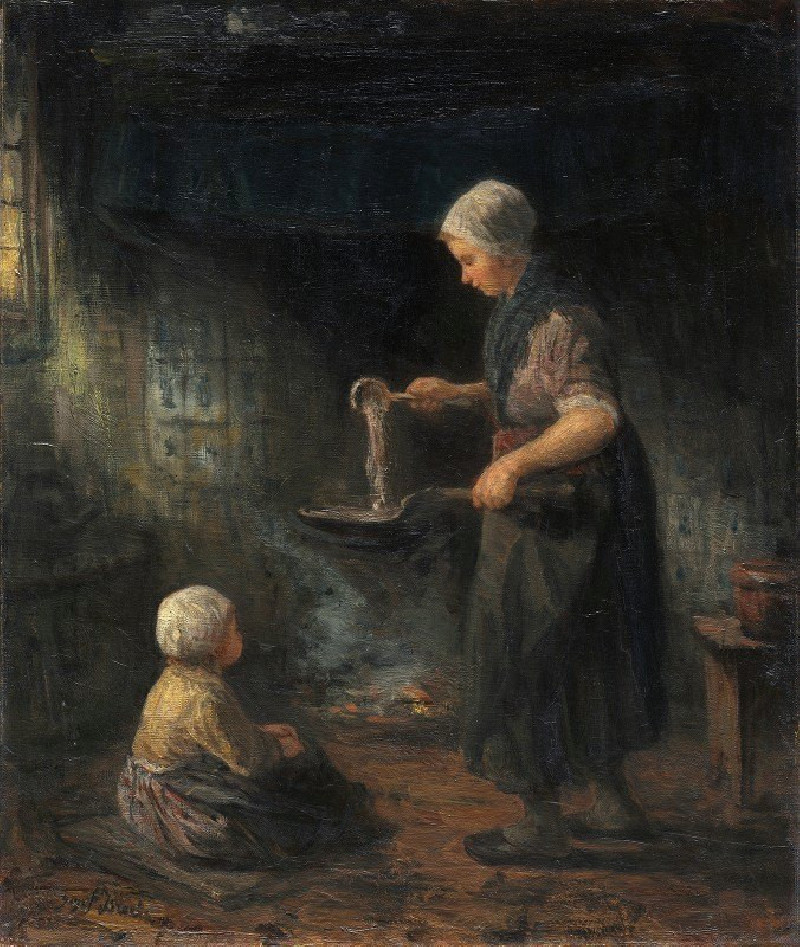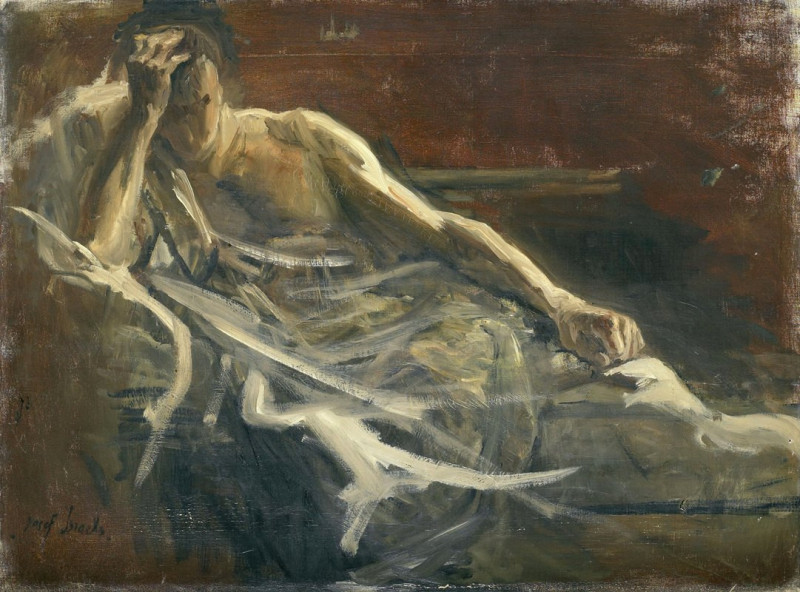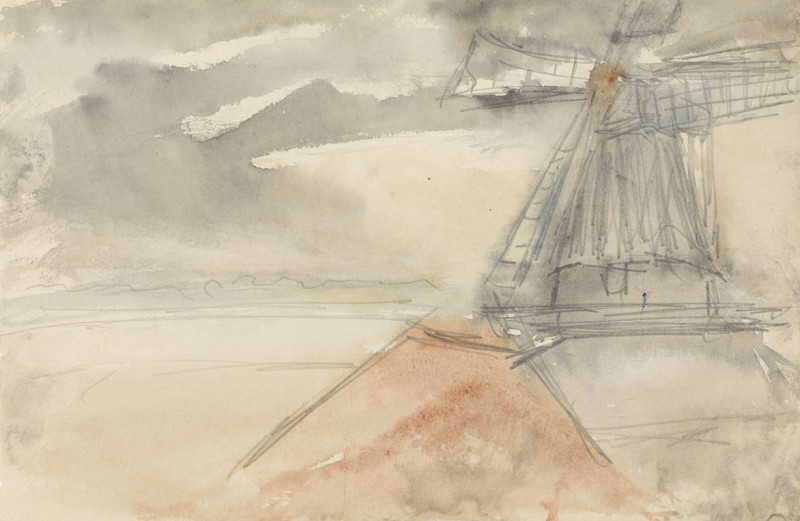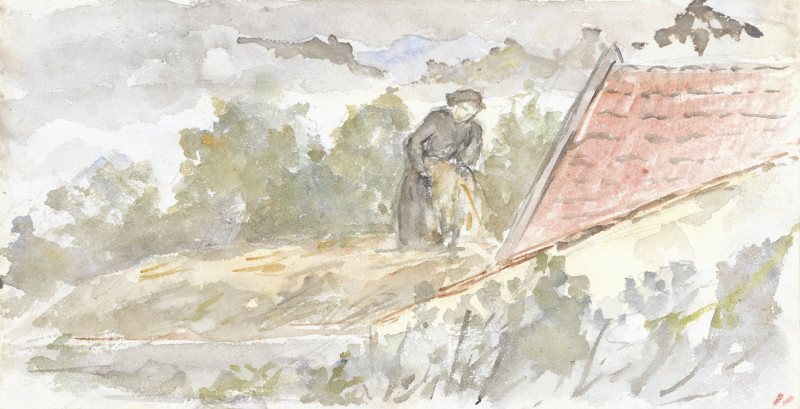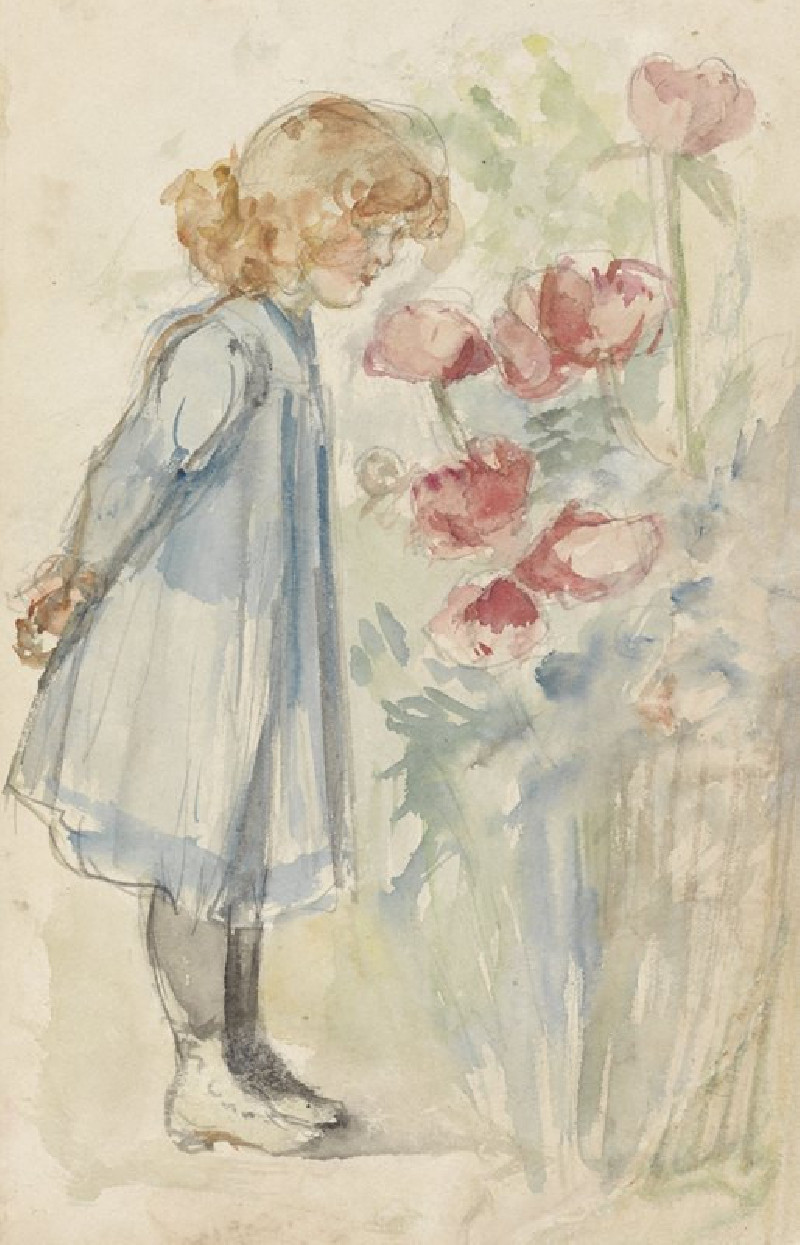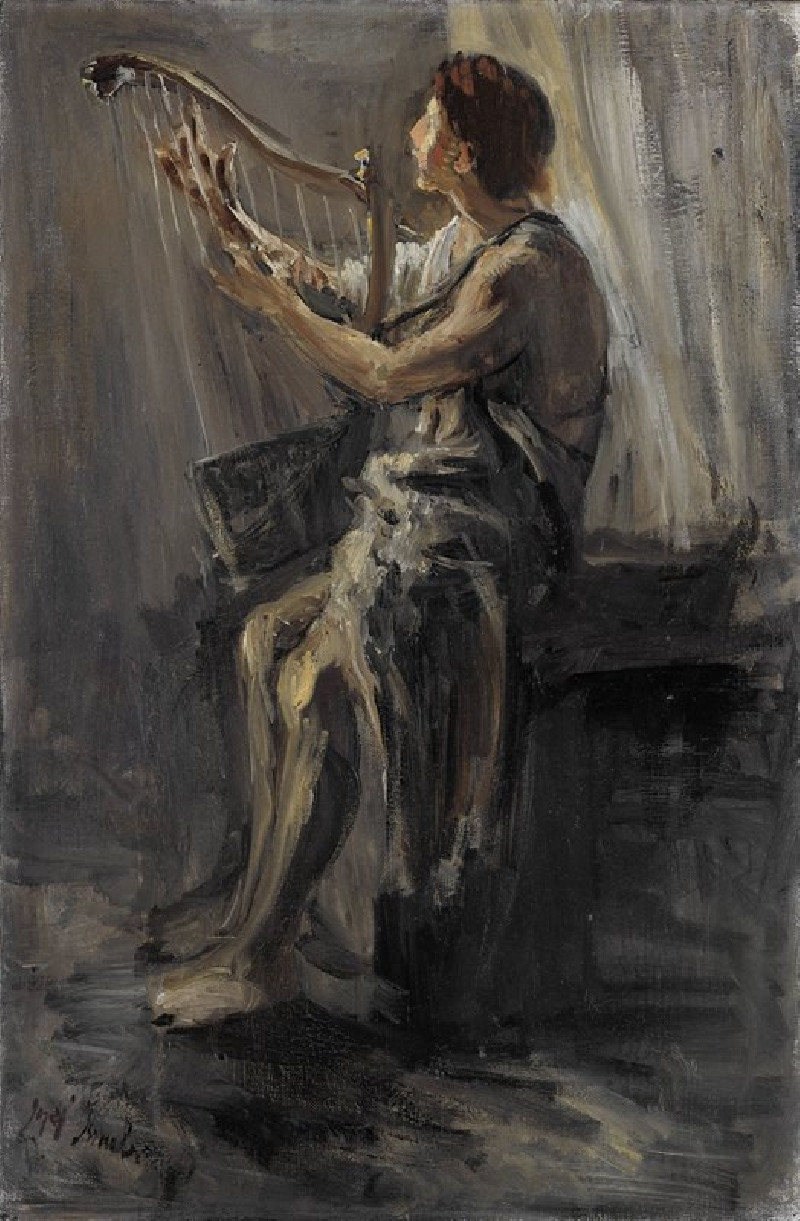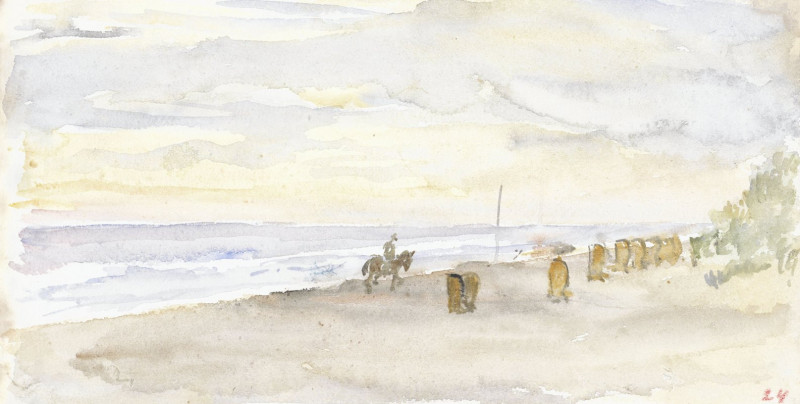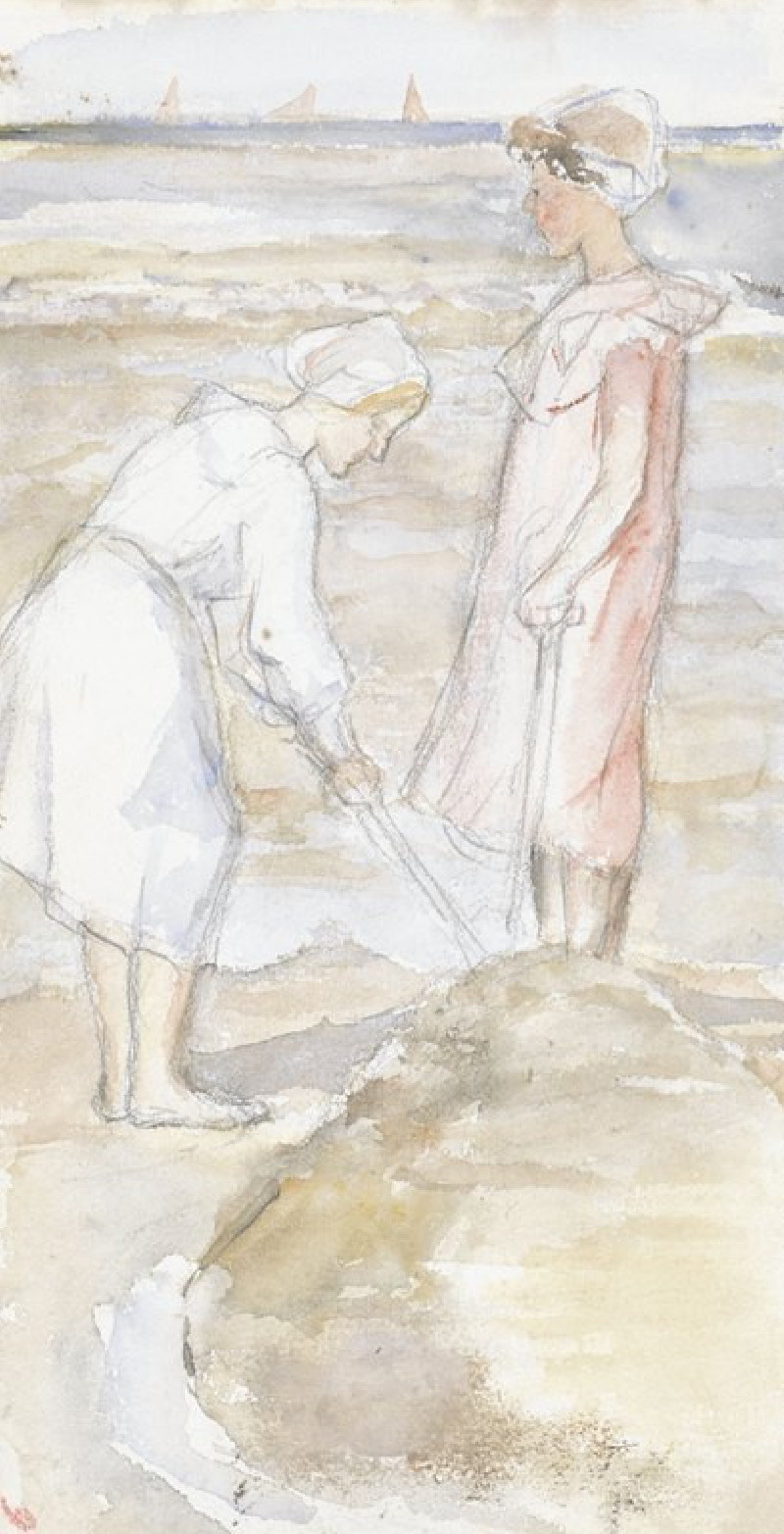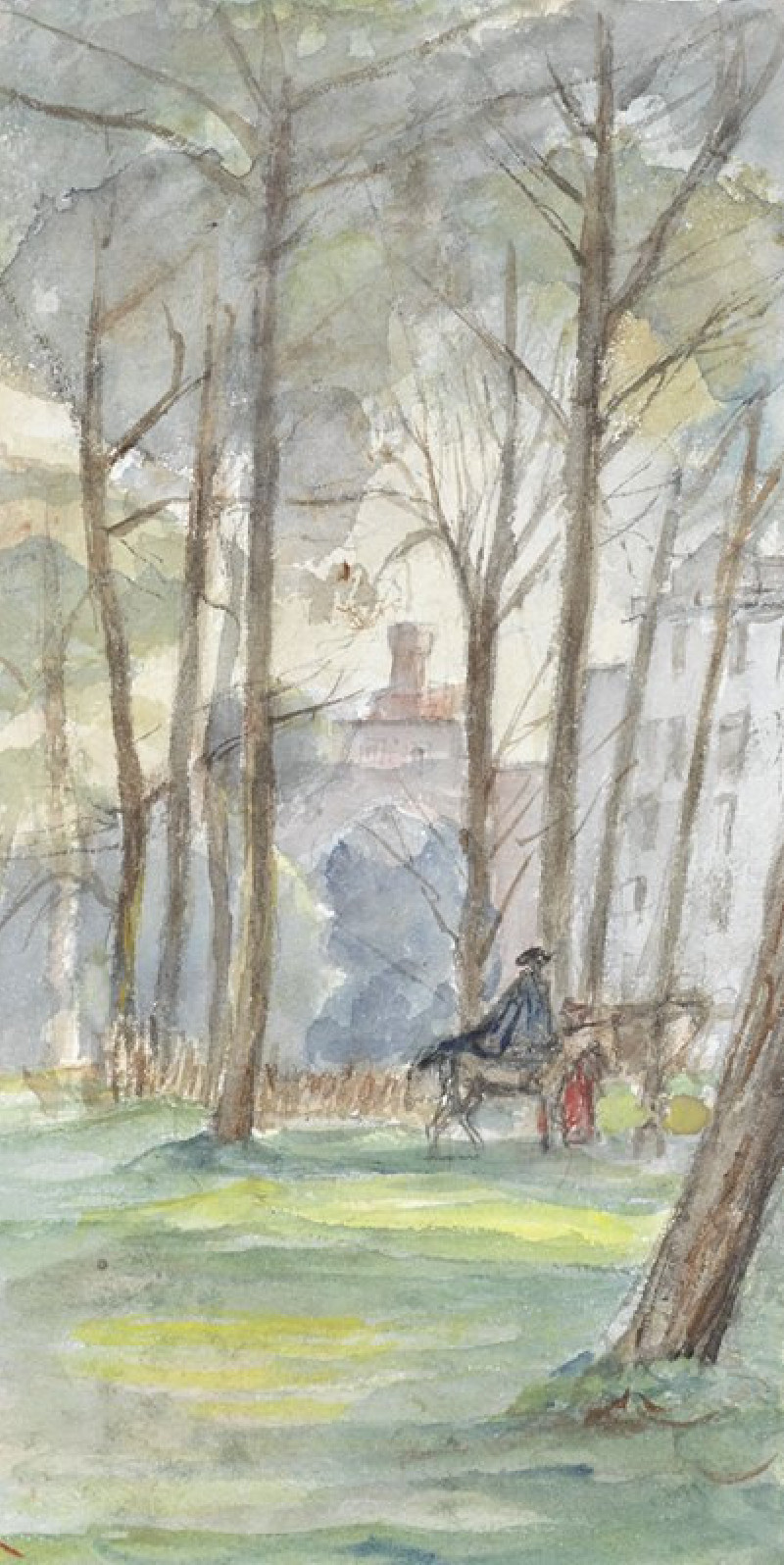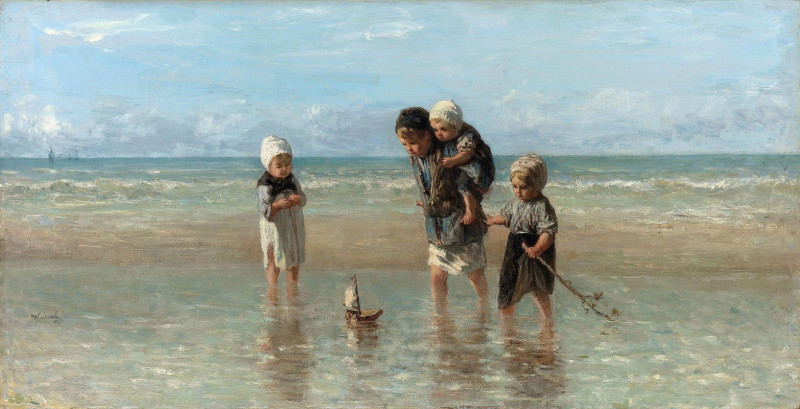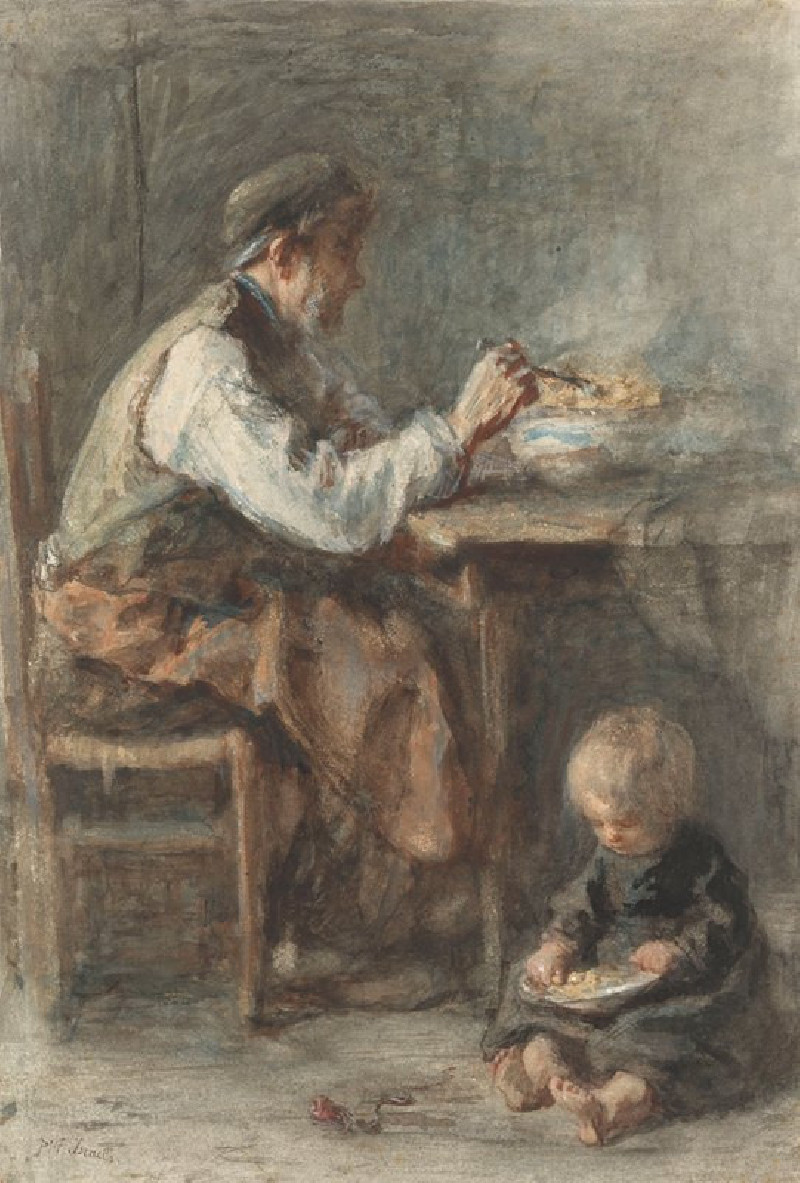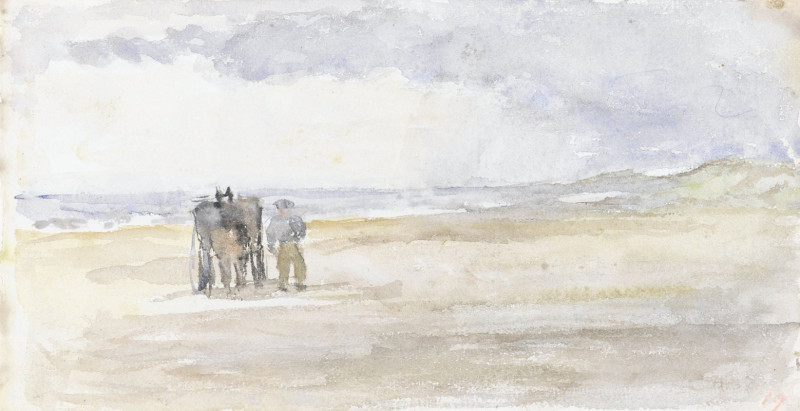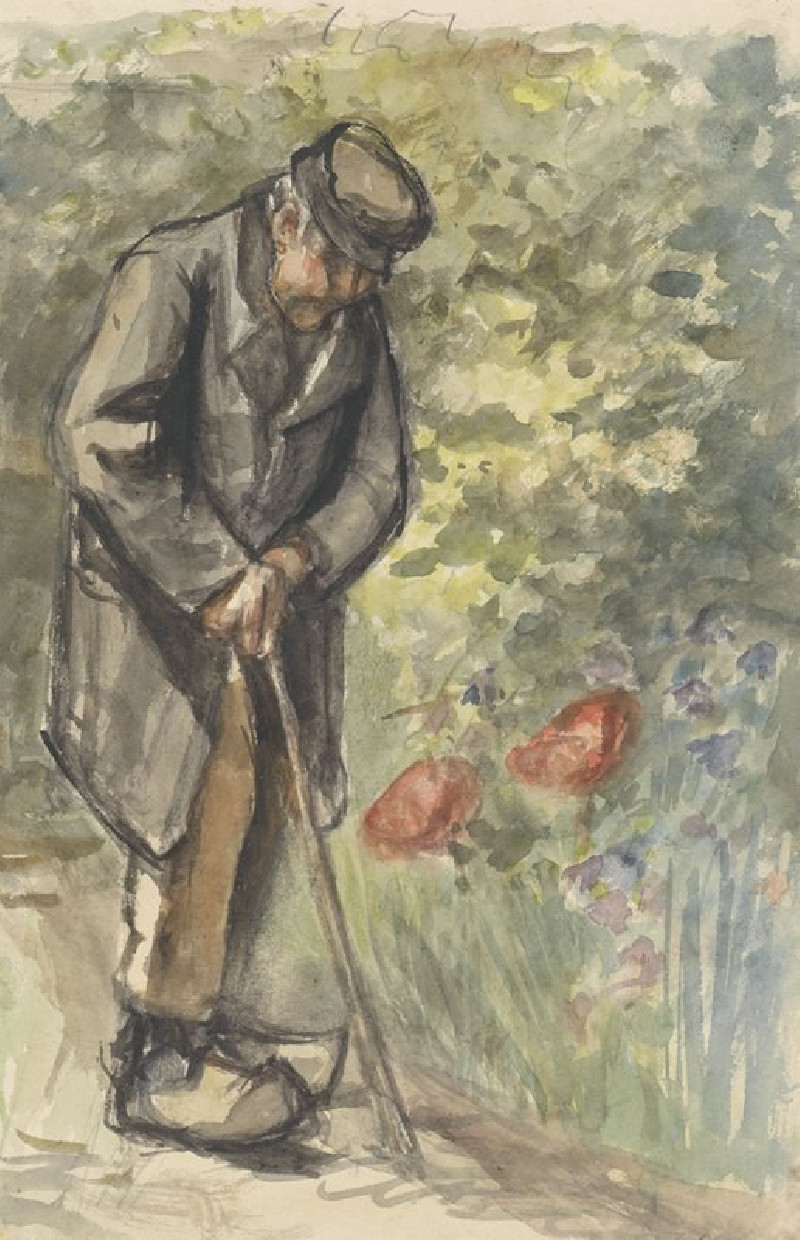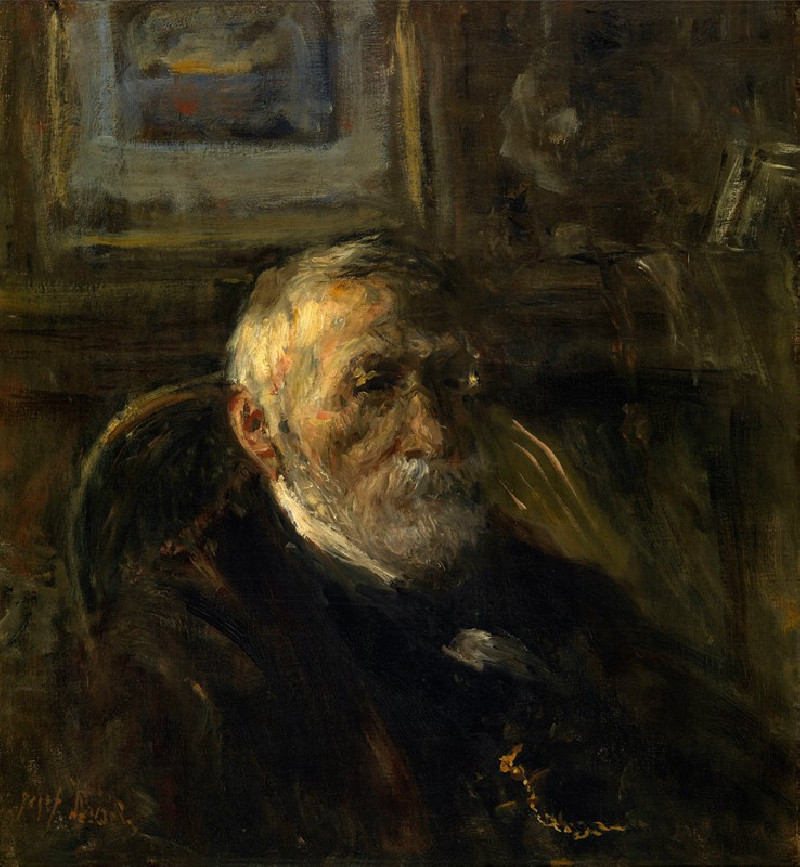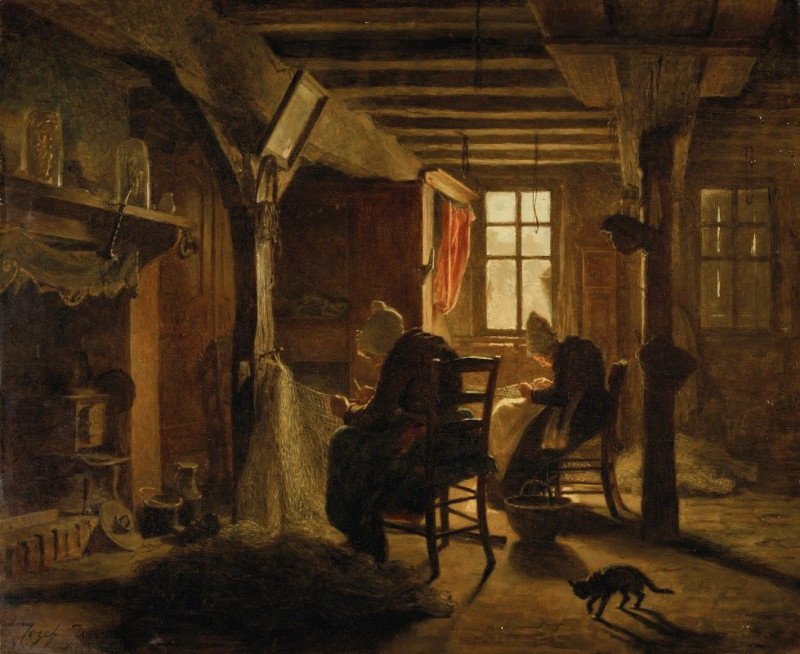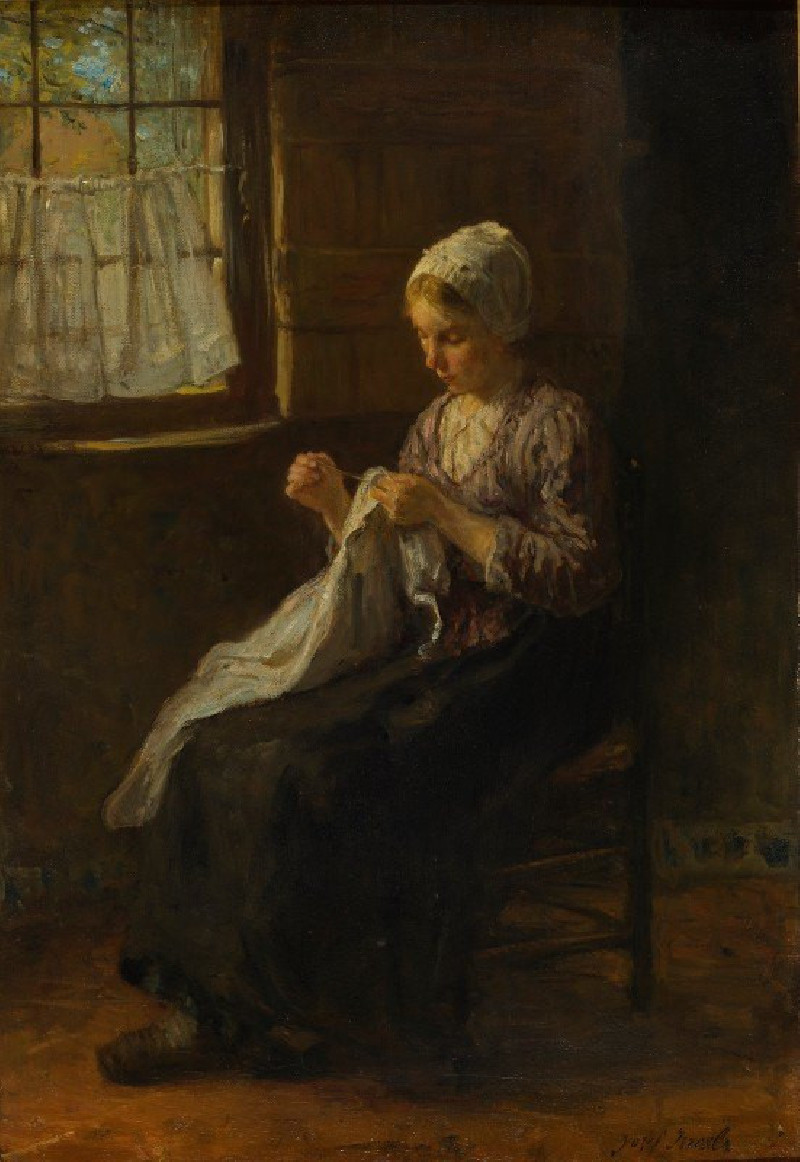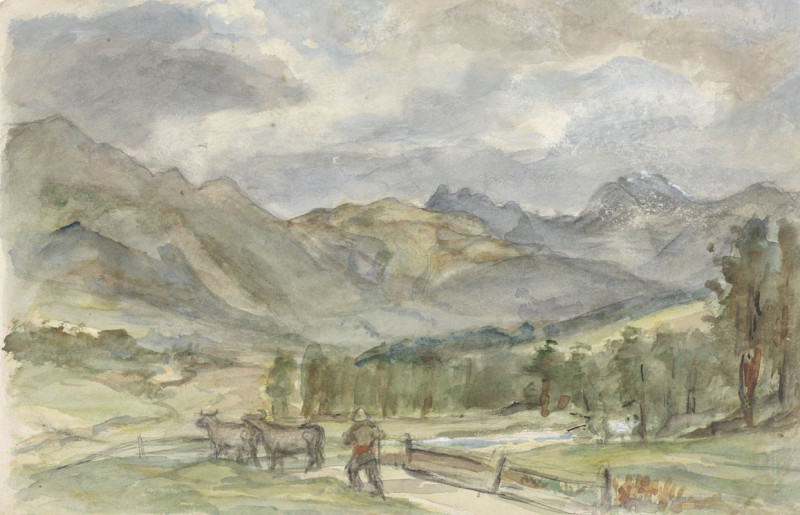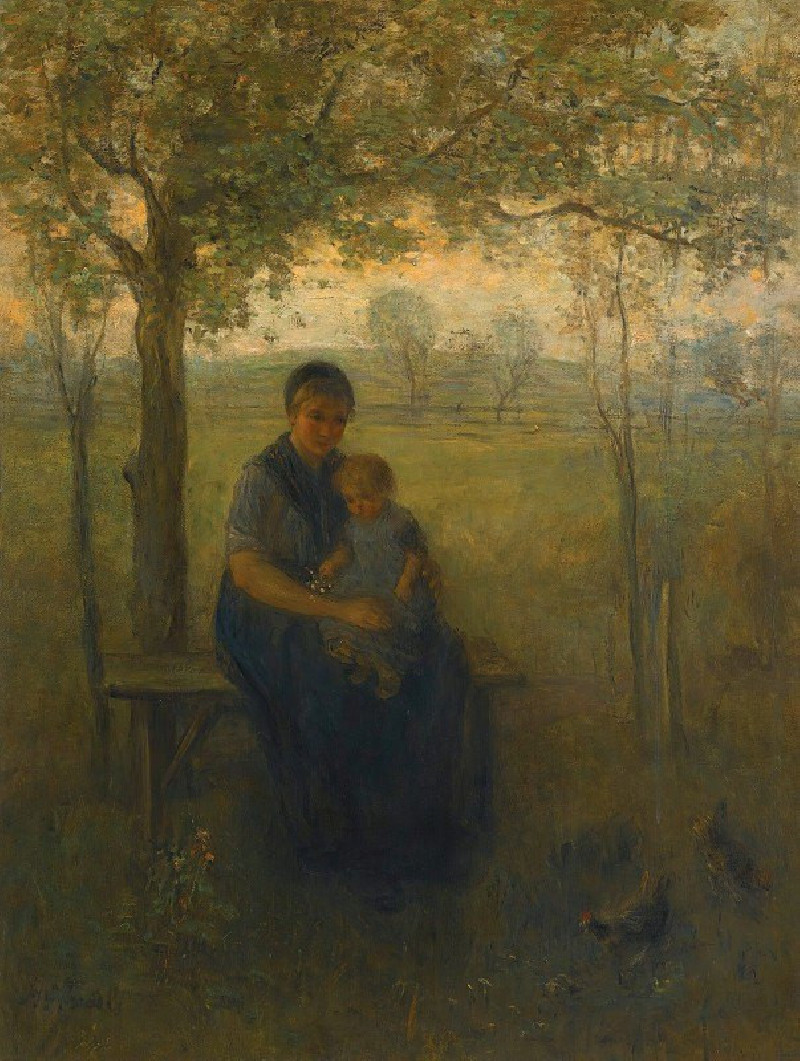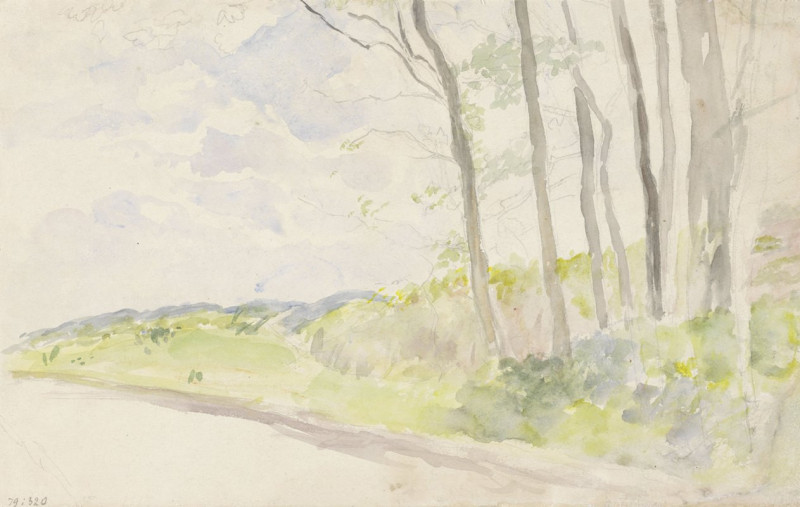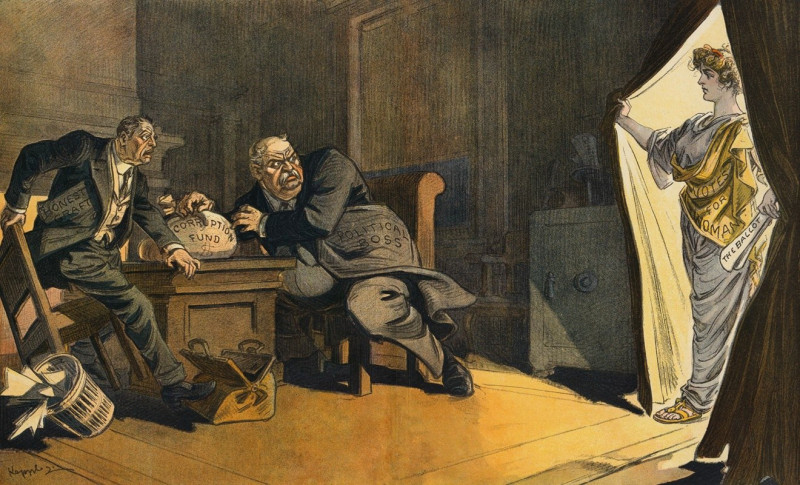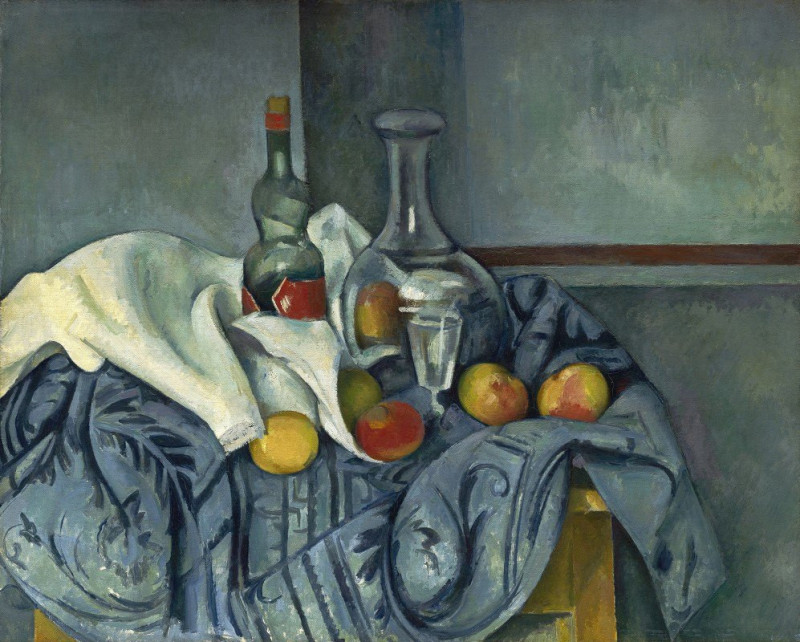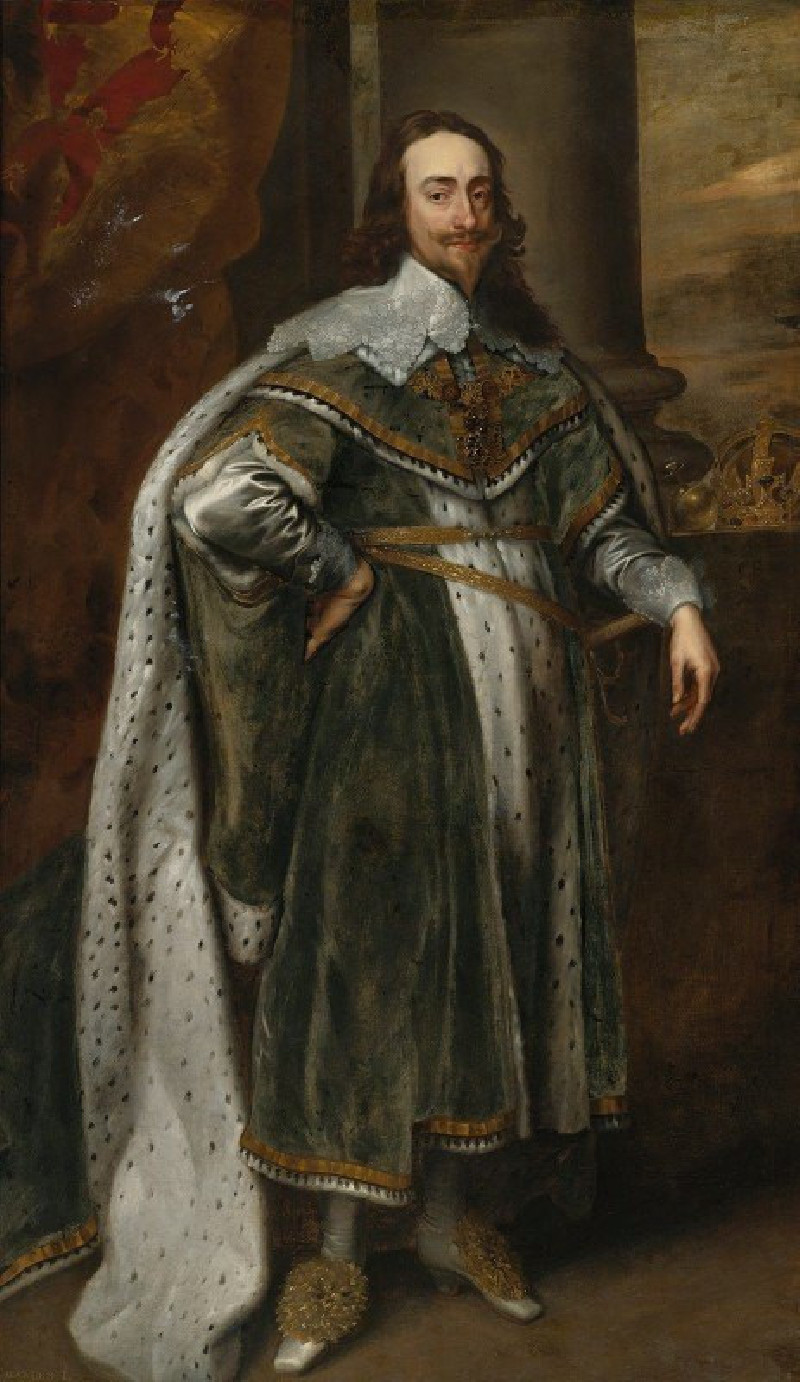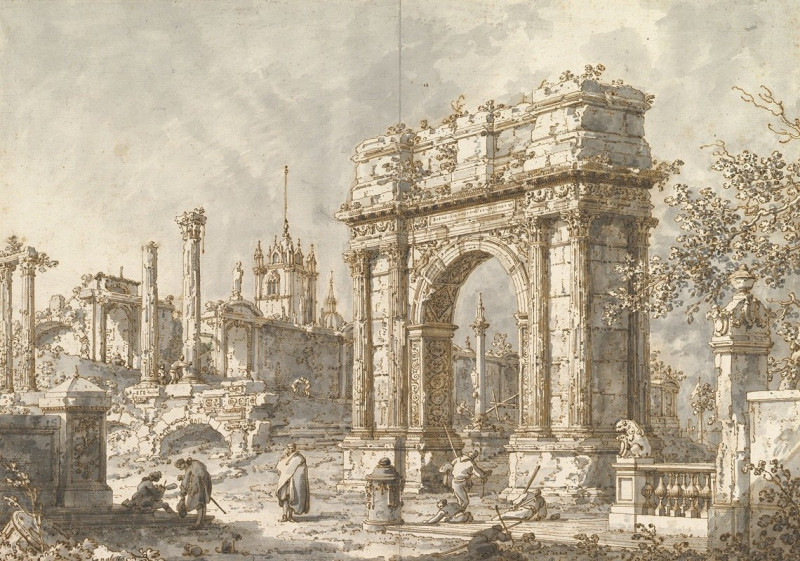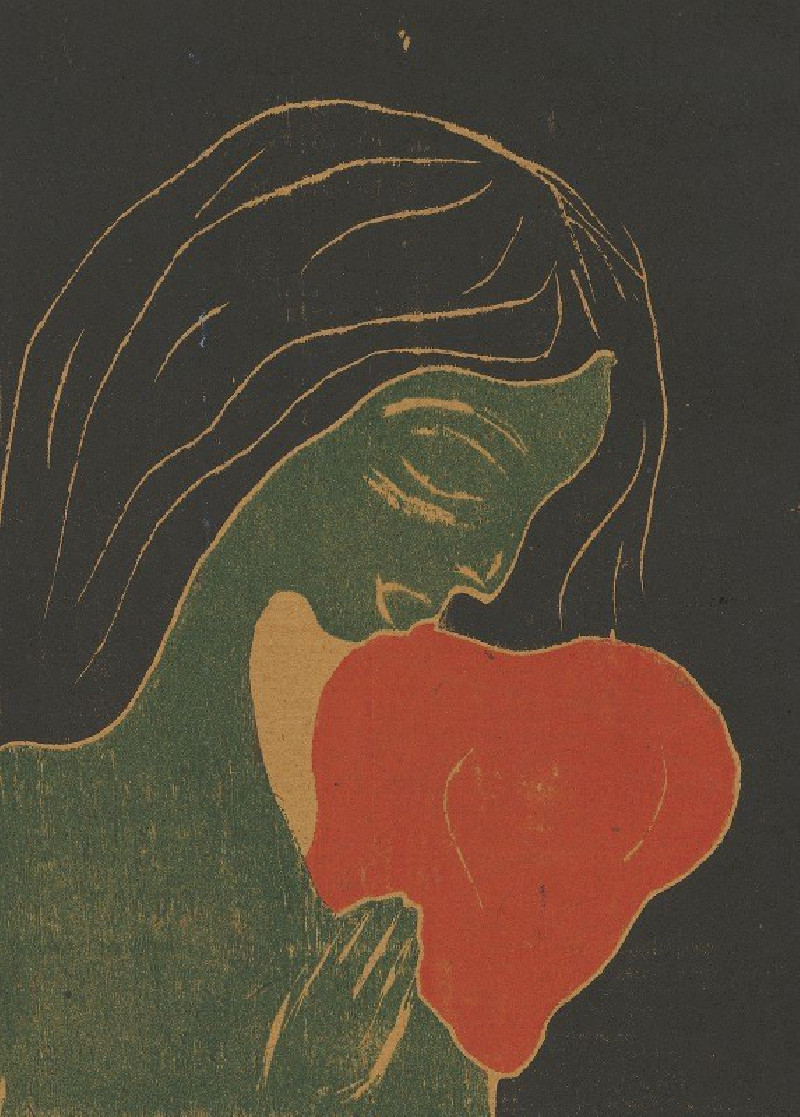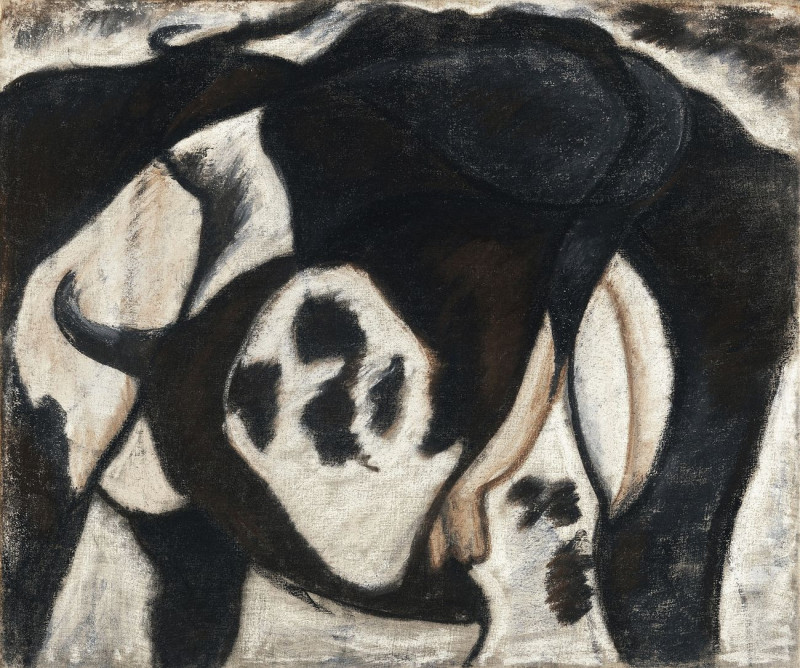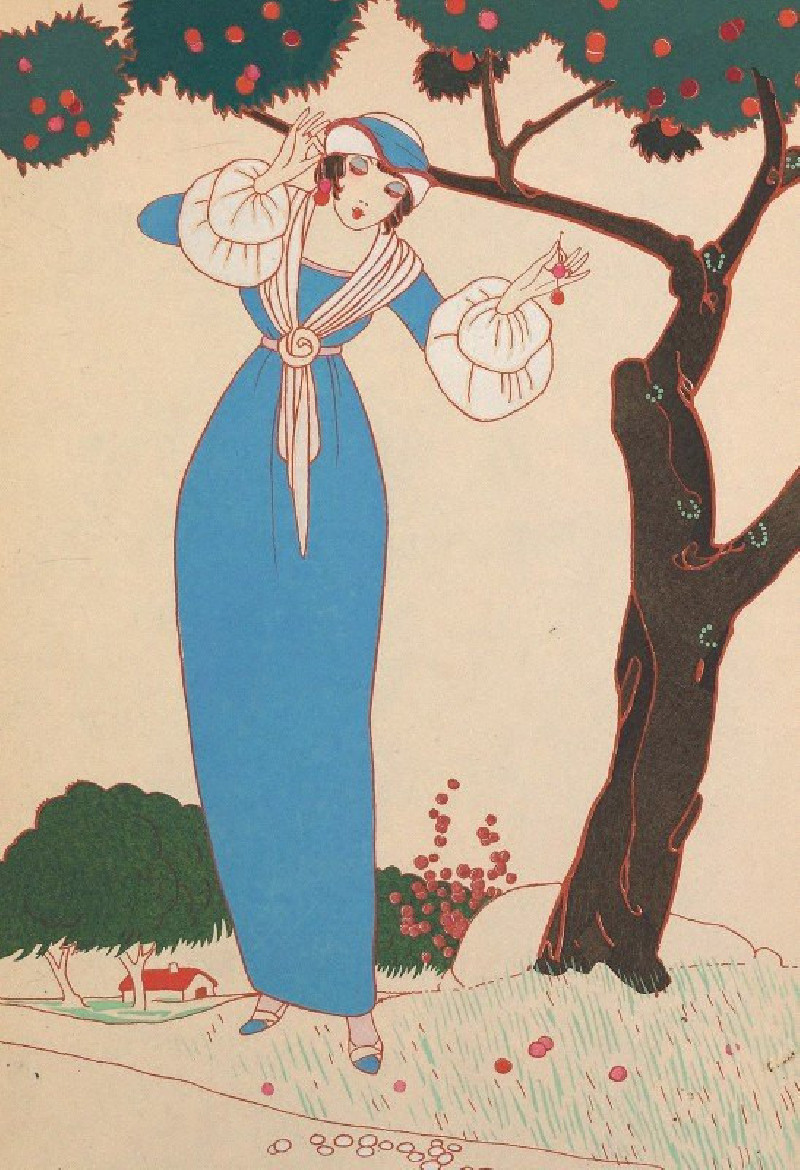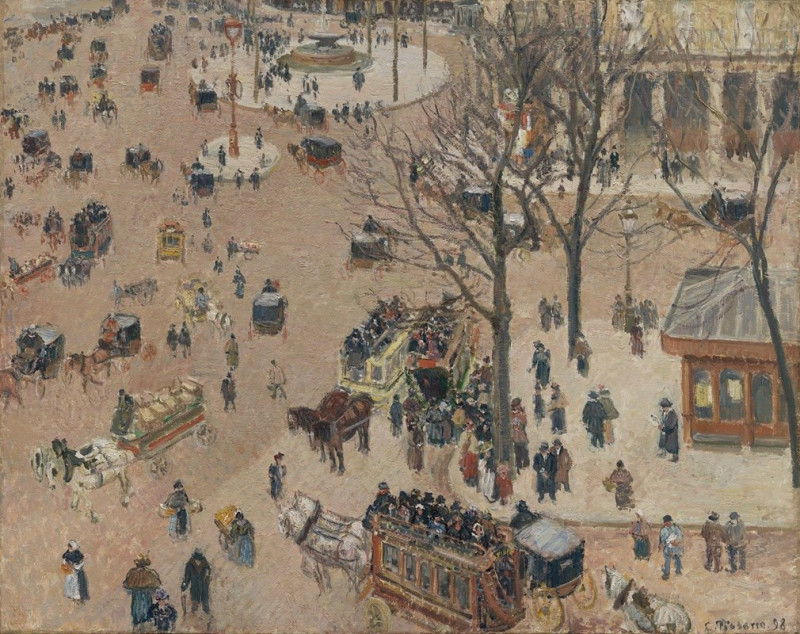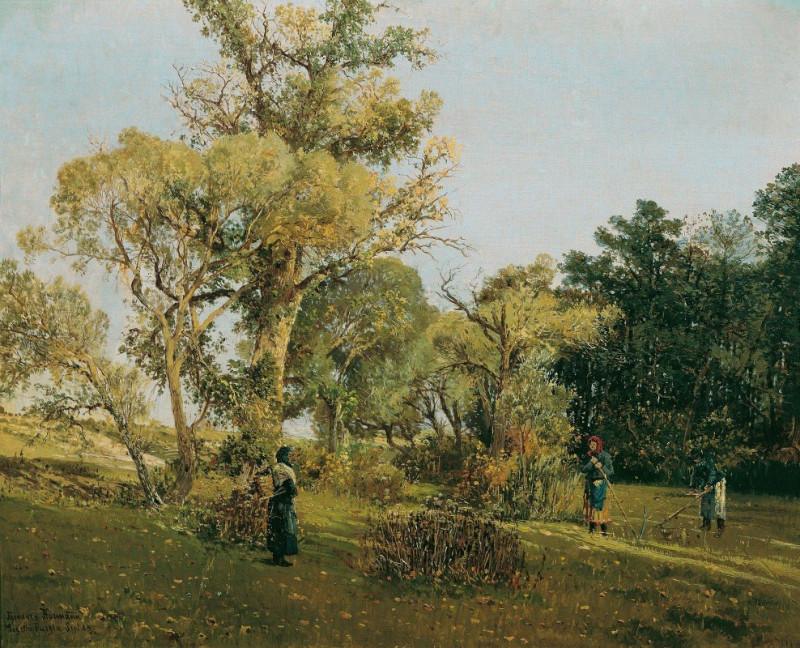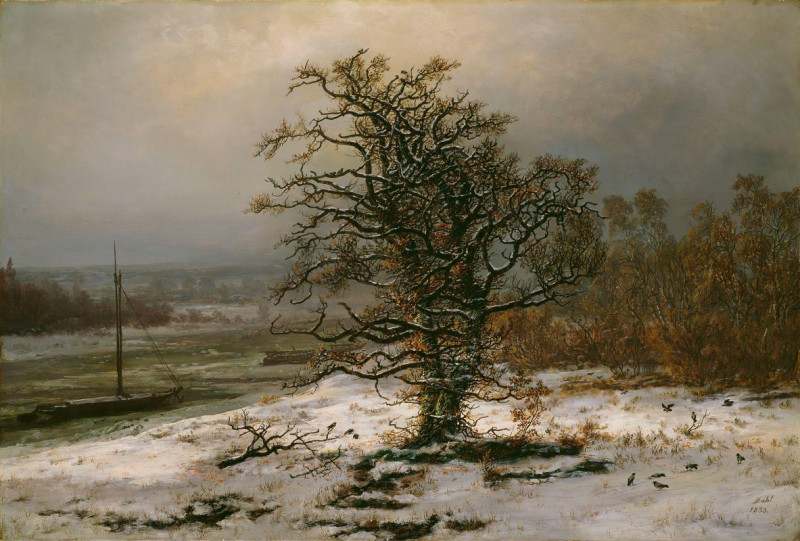The Sand Bargeman (1887)
Technique: Giclée quality print
Recommended by our customers
More about this artwork
"The Sand Bargeman," painted by the renowned Dutch artist Jozef Israëls in 1887, captures a poignant and evocative scene of rural labor that is both timeless and deeply resonant. In this atmospheric composition, Israëls displays his masterful handling of mood through a subdued palette and skilled brushwork that invite the viewer into a reflective narrative.The painting depicts a lone bargeman, his figure bent slightly from the effort, as he pulls a loaded boat along a tranquil waterway. The scene is enveloped by a copse of towering trees, their bare branches etching a delicate web against the overcast sky, suggesting the chill of an early morning or the onset of dusk.In the foreground, the sandy shores beside the water and the quiet ripple of the surface set a serene yet somber tone. The bargeman, adorned in simple work clothes, is portrayed in mid-action, emphasizing the daily perseverance required in his solitary profession. The subtle use of lighting highlights the physical strain visible in his posture and the determination etched across his profile.Behind him, partially obscured by the trees, stands a small, rustic cabin that adds a hint of human presence and perhaps, a place of rest in his laborious journey. The overall effect of the piece is a powerful visual commentary on the theme of man versus nature and the enduring human spirit.Jozef Israëls, often referred to as the 'Dutch Millet', was famed for his ability to portray the lives of the working class with empathy and respect, a theme that is vividly encapsulated in "The Sand Bargeman.
Delivery
Returns
Jozef Israëls was a Dutch painter. He was a leading member of the group of landscape painters referred to as the Hague School and, during his lifetime, "the most respected Dutch artist of the second half of the nineteenth century".
He was born in Groningen, of Jewish parents. His father, Hartog Abraham Israëls, intended for him to be a businessman, and it was only after a determined struggle that he was allowed to embark on an artistic career. He studied initially from 1835 to 1842 at the Minerva Academy in his home town Groningen.


